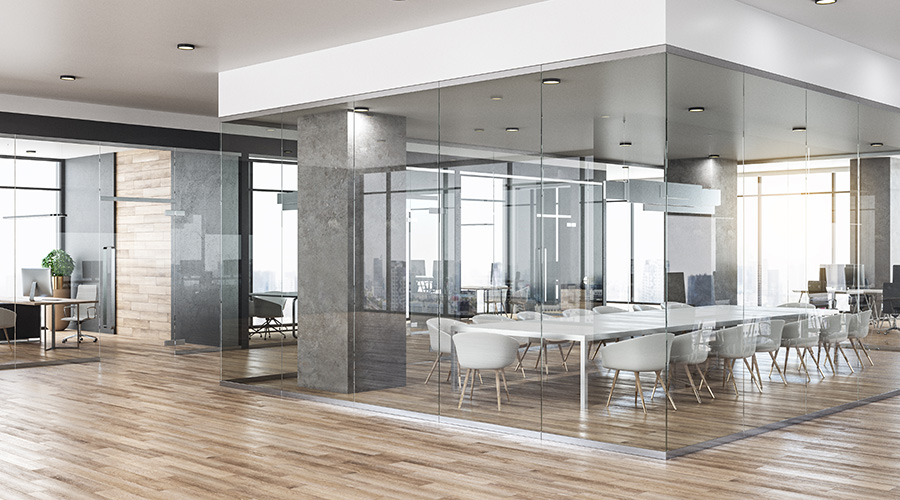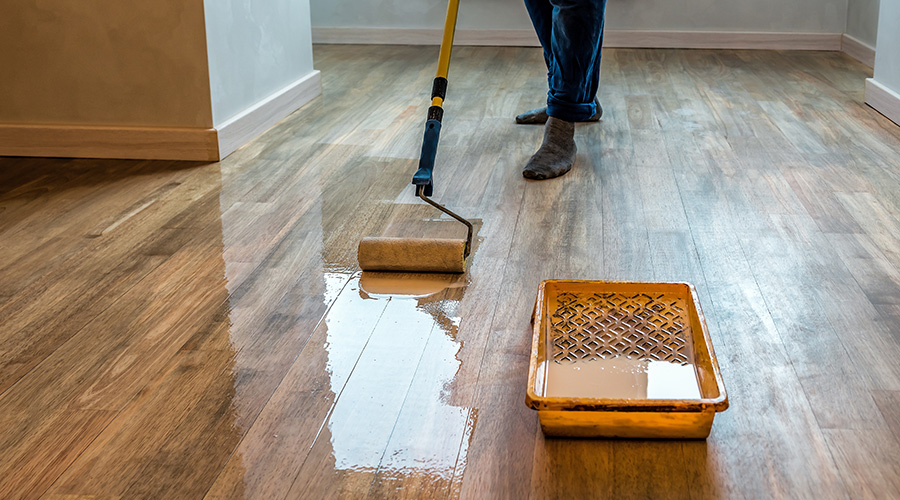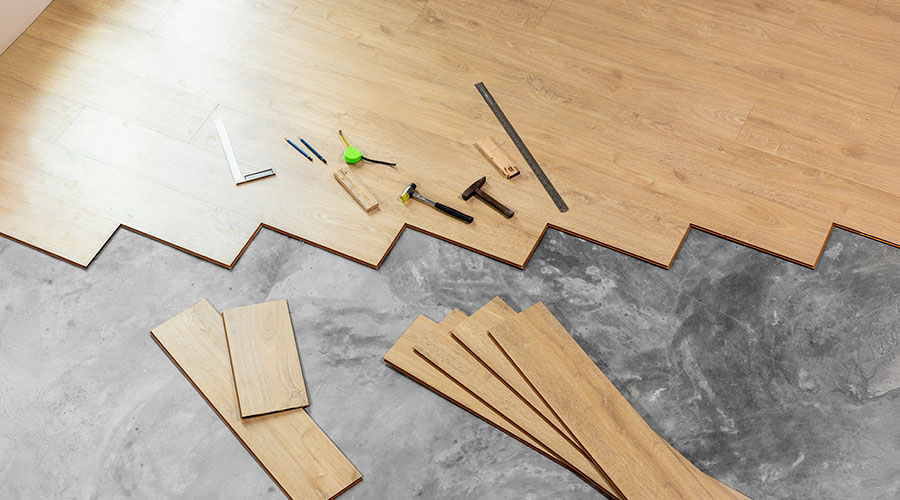Steps to Selecting the Best Floor
Examining existing notions about flooring materials can pay unexpected dividends in appearance, cost and longevity
Make no mistake, choosing wood, tile or carpet to use as flooring material is an important decision for facility executives. A key component of that decision-making process — and one that influences the type of floor selected — is knowing how a flooring material suits a facility’s design, function and budget.
“Choose the best horse for the course,” says Fritz Iselin, repeating a British proverb. However, it’s not thoroughbreds that Iselin, a flooring consultant with Niagara Research Associates in Jacksonville, Fla., is talking about — it is flooring.
To uncover the right product, facility executives should be guided by the overall goals of a project. Given the advances in flooring technology and materials, facility executives will need to re-examine any existing notions they have regarding different flooring choices. Also, facility executives should know how to appropriately prepare the subfloor and choose the proper backing. In addition, many facility executives will want to keep in mind the ecological impact of their flooring choices and consider the ways in which flooring can be used as a design element.
Overall Goals
“It may be obvious, but so often I find that when people are selecting their flooring material, it’s easy for them to lose sight of the overall goals of the project,” says Sandy Kate, principal and director of interior design with Fanning/Howey Associates Inc. in Celina, Ohio. Instead, one person’s preferences may exert a disproportionate amount of influence on the final choice.
For instance, a maintenance employee may push for flooring material that’s cleaned using familiar processes. And clearly, it’s important to choose a floor that can be properly maintained within the time and resources of the janitorial staff. For instance, Bill Ragaller, director of design with KA Architects in Cleveland, recently completed a lobby floor that linked a manufacturing plant on one side with administrative offices on the other. Employees walking through the plant picked up fine metal shavings that would remain on their shoes as they headed to the administrative wing of the building.
In choosing flooring for the lobby, Ragaller and his colleagues chose a terrazzo tile designed with flecks of metal. “It camouflaged the traffic terrifically, and maintenance was happy because they didn’t have to clean it every two minutes,” says Ragaller.
On the other hand, facility executives shouldn’t limit potential flooring choices to those familiar to the maintenance staff. Instead, they may need to discuss with employees the maintenance regimen a new material requires and allow them to learn the new process. Otherwise, the flooring won’t perform as well as it should.
“One thing we’re seeing lately is that the right products are specified, but the cleaning isn’t done right, so the products don’t last,” says Alana McKenzie, senior interior designer with Flad & Associates in Madison, Wis. For instance, many of today’s carpet fibers repel dirt more effectively than those of the past and require less detergent to get clean. If the maintenance staff continues to use the same amount of cleaning agents, the flooring actually may attract dirt and end up looking dull and worn.
Budgets also have a legitimate and significant role to play in the choice of flooring. However, facility executives will want to make sure that the material decided upon isn’t penny-wise and pound-foolish.
New Technology
Given advances in the processes used to manufacture flooring, and manufacturers’ growing ability to work effectively with an expanding range of materials, facility executives will want to make sure they’re not holding onto inaccurate notions about different flooring materials.
For instance, the carpets of choice in health care settings historically have been solution-dyed because the colors could better withstand bleach cleaning, says McKenzie of Flad & Associates. Today, even carpets that aren’t solution-dyed may be able to resist the bleach used in cleaning and might make appropriate floor coverings.
Another shift: Previously, broadloom carpet almost always won the battle of the budget when up against carpet tile. That’s no longer the case, says Richard Mark, design director with Kling in Philadelphia. For starters, the price of carpet tile has come down significantly. In addition, there’s often less waste with carpet tile, which means that facility executives can order a smaller amount. Finally, the cost of installing carpet tile can be up to 25 percent less than the cost of installing broadloom. Add it all up, and carpet tile may be the less expensive option, says Mark.
Another area in which facility executives will want to re-examine their assumptions concerns “green” flooring. Clearly, choosing a flooring material that is made using processes and materials that don’t harm the environment is good.
However, it’s important that facility executives educate themselves about the overall environmental impact of the flooring material they’re considering. Some products are not as ecologically sound as they appear. “You don't want to make assumptions,” says Ragaller of KA.
For instance, it might appear that wood flooring always is environmentally friendly because it’s a renewable resource. However, some wood products come from rain forests, where the destruction of mass quantities of trees can decimate the ecosystem. To determine just how green a product really is, facility executives should check the processes used to produce the material and determine if they’re detrimental to the environment, recommends Ragaller. They also need to ask whether the material is made from recycled material or can be recycled.
The Backing and Subfloor
While they may not be visible, choosing appropriate backing materials and knowing how to adequately prepare the subfloor are critical factors in the long-term success of a flooring material. In health care settings, for instance, a backing that prevents stains and spills from permeating to the floor underneath might work best. Otherwise, even if the cleaning crew can extract a stain from the carpet fiber, it may remain on the subfloor and continue to seep through the carpet, says Jennifer Delikat, interior designer with Jova Daniels Busby in Atlanta.
In addition, facility executives should review the recommended subfloor preparation for any flooring material. The desire to accelerate construction schedules can mean that steps get skipped, and the flooring material won’t hold up as it should. For instance, cement floors that come into direct contact with the earth will absorb ground moisture. Laying a flooring material on the cement can create a breeding ground for mold and bacteria, says Iselin of Niagara Research Associates.
In addition, imperfections in the subfloor, such as small bumps, can cause flooring to wear out more quickly than it otherwise would, says Mark of Kling. “Preparation of the subfloor is a big problem with the failure of flooring materials.”
Flooring Design
Finally, facility executives will want to consider how the design of the flooring material can enhance the facility, says Kate of Fanning/Howey. “In any space, you can use flooring to define certain areas.”
In educational facilities, particularly elementary schools, the flooring design can be used as an instructional tool. For instance, a carpet design may include the alphabet or the numbers from one to 10. In health care facilities, the flooring design can include arrows or other symbols that direct visitors to the main areas. Businesses that serve the public, such as banks and fast-food restaurants, can use the design of their flooring to help customers figure out where to line up.
In some cases, flooring design actually can boost safety. Ken Hercenberg, senior specifier with the Baltimore-based architectural firm RTKL, says that people often miss the bottom step in a flight of stairs and end up falling. Simply painting the last step a lighter color can make it stand out, so that people are less likely to trip, he says. “Using a light color at the bottom of the stair as a transition tool makes depth perception a little easier.”
Contributing editor Karen Kroll is a business writer who covers real estate and facilities issues.
Related Topics:










